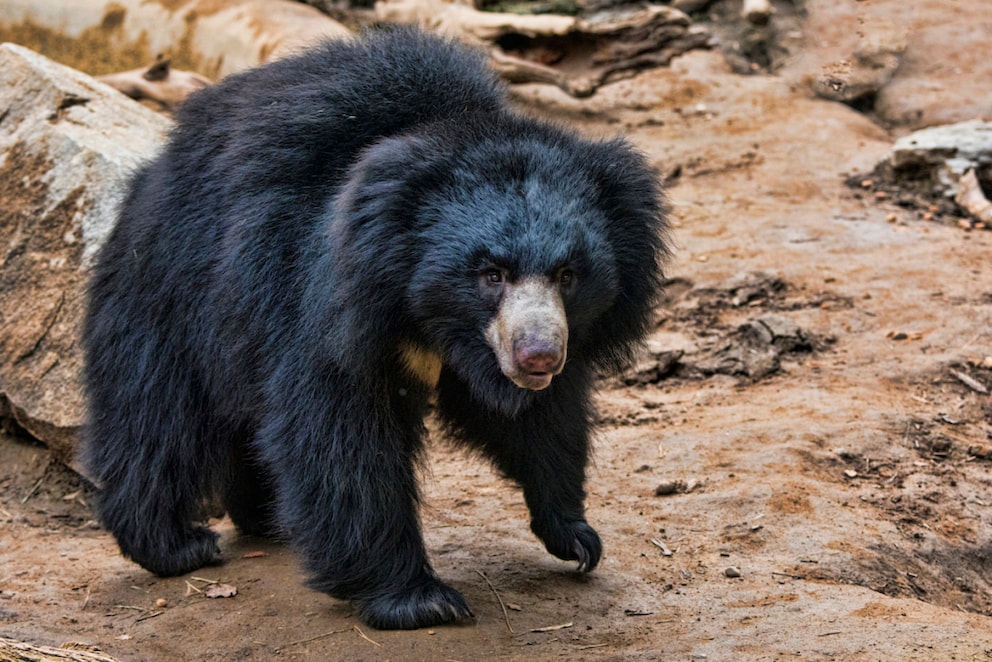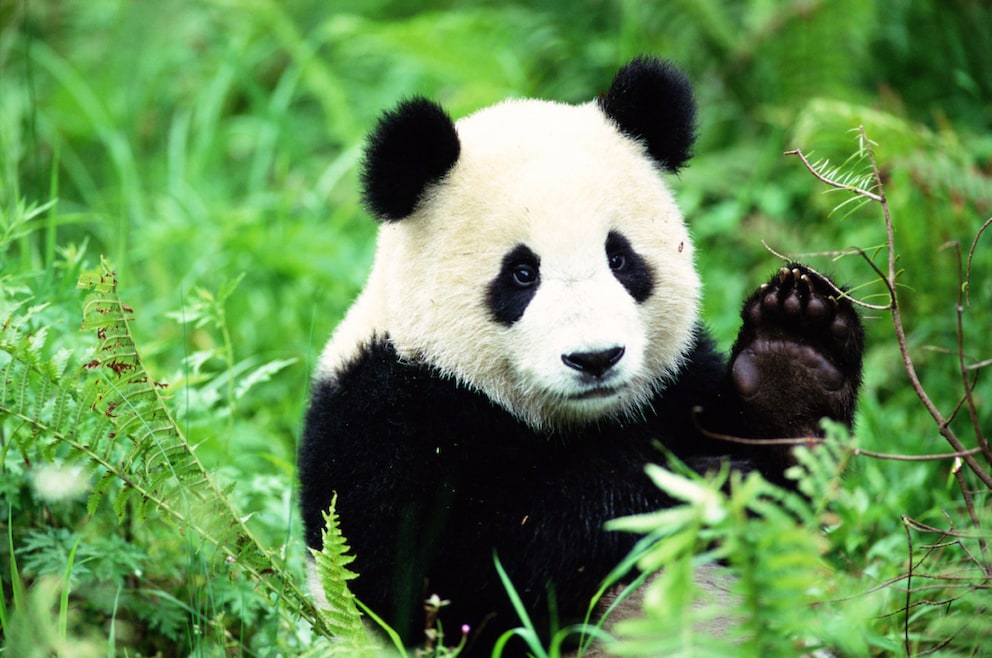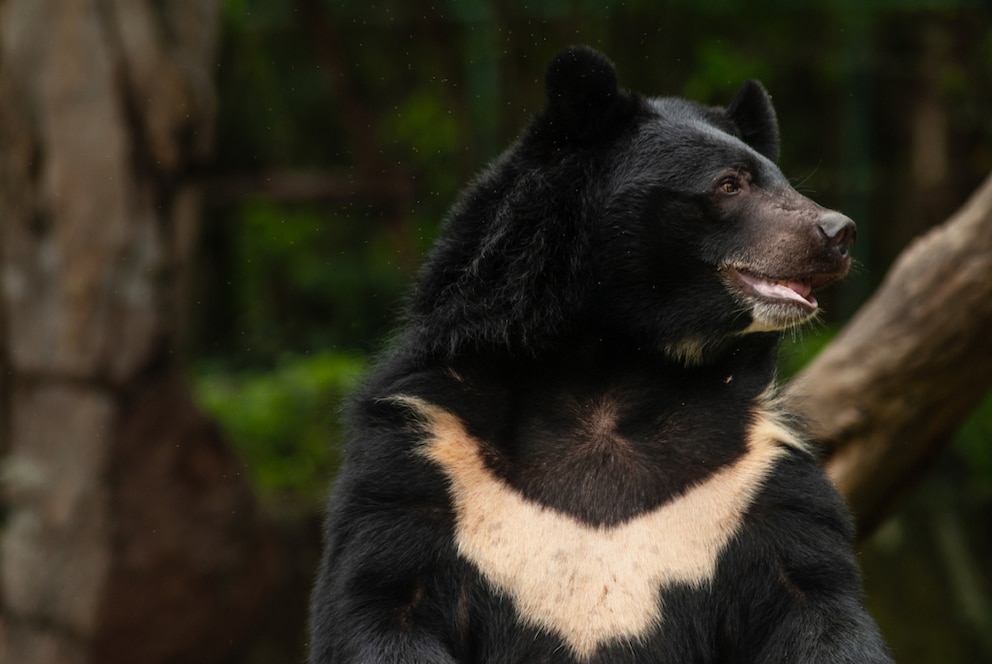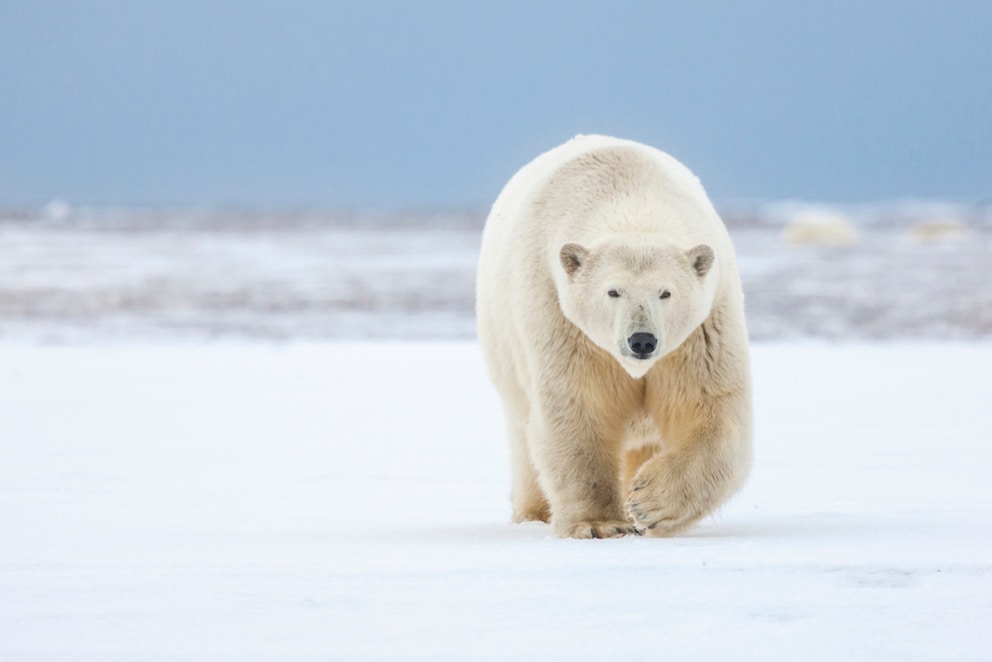February 9, 2024, 9:05 am | Read time: 7 minutes
Few animal families are as misunderstood as that of bears. It’s no surprise that the brown bear is one of the so-called “true bears.” However, few people know which other seven species belong to this group. PETBOOK provides an overview and introduces the largest bear of all time.
Bears fascinate people in a very special way. On one hand, many perceive them as fluffy and cute due to their thick fur and dark eyes. The teddy bear remains one of the most popular stuffed animals. However, real bears also have another side–that of the formidable king of the forest landscape, whom one would not want to encounter alone, especially after a long winter’s sleep. But which animals truly count as real bears? PETBOOK takes a closer look at all eight living bear species.
What Exactly Is a Real Bear?
First, we need to define real bears, or large bears, more precisely. Did you know that real bears are biologically classified as caniforms? However, they don’t exactly look like it. The terms large bears and small bears can be misleading. Small bears like the raccoon or coati are actually more closely related to weasels than to bears.
All real bears have a very similar body structure: They are stocky, with a large head and strong arms and legs. They have 40 or 42 very strong teeth, with pronounced canines in some species. Their powerful paws also have long, formidable claws. Bears are also characterized by their very short tails, sometimes almost just a stub. Their fur is usually very bushy, and among Asian bears, there are species with distinct fur patterns, while other bears are generally solid-colored.
There are significant differences in size and weight. Some brown bear species weigh up to 800 kilograms, while other bears start at a weight of 25 to 30 kilograms. The size range of real bears is similarly large. While the smallest reach a size of one meter, the largest can be up to 2.8 meters tall. Below, you’ll find the real bears ranked by weight and size.
An Overview of All 8 Real Bears
Sun Bear, Ursus malayanus
Let’s start our overview with the smallest of the real bears. The sun bear, also known as the Malayan bear due to its distinctive markings, primarily lives in Asia. It grows to be one to one and a half meters tall and weighs 30 to 80 kilograms. With its curved front paws, it skillfully climbs trees. There, it searches for beehives, which it breaks open with its oversized canines and up to 25-centimeter-long tongue to enjoy the honey. It uses the same technique on termite mounds.

Sloth Bear, Ursus ursinus
The sloth bear also loves to hunt termites. It is mainly found in Asia, including India, Nepal, Bhutan, and Sri Lanka. It has very bushy and long fur, which does not warm it but keeps it cool in the tropical temperatures of its homeland. Therefore, it has no undercoat and usually a sparsely haired belly. It reaches a body length of 140 to 190 centimeters and weighs up to 145 kilograms. Unlike the sun bear, it uses its namesake lips for feeding. These are quite long and flexible. To consume termites, the sloth bear practically sucks them up.

Giant Panda, Ailuropoda melanoleuca
The giant panda is also one of the Asian real bears. It is now only found in China and is considered a national symbol there. For many years, the country has engaged in so-called panda diplomacy with friendly nations. Pandas are gifted to zoos and animal parks in these countries, but their offspring must always return to China, as the country claims ownership of the entire panda population. The giant panda is a dietary specialist, feeding on bamboo. It grows to be 120 to 180 centimeters tall and weighs 85 to 125 kilograms.

Asiatic Black Bear, Ursus thibetanus
The Asiatic black bear gets its name from its characteristic V-shaped fur marking, which has also earned it the nickname “moon bear” due to its crescent shape. It is mainly found in the Asian part of Russia, as well as Japan and China. Its size varies greatly–from 1.1 to 1.9 meters. Correspondingly, weight estimates range from 60 to 250 kilograms.

Spectacled Bear, Tremarctos ornatus
With the spectacled bear, we move to the American double continent, specifically to South America. It is found in Bolivia, Peru, Ecuador, Colombia, and Venezuela and is the only South American representative of real bears. It prefers to live reclusively in the Andes at altitudes of 1,100 to 4,700 meters. Accordingly, spectacled bears are extremely adaptable and can survive in high-altitude deserts with sparse food supplies. They reach an average size of 130 to 190 centimeters and weigh 100 to 175 kilograms. Spectacled bears have a striking light fur marking on their face, which in some of the first observed animals appeared like spectacles, giving them their name. However, each bear has a unique pattern.

American Black Bear, Ursus americanus
The third-largest representative of real bears is the American black bear. With a maximum head-to-body length of two meters, it is not much larger than other bear species, but it can weigh up to 400 kilograms before hibernation. They are primarily found in Canada, the United States, and northern Mexico. They share their territory with other bear species but prefer to live alone in dense forests and at altitudes above 3,000 meters.

Brown Bear, Ursus arctos
Even larger and more massive, but still only in second place, is the brown bear. It grows to be 1.5 to 2.8 meters long and weighs up to 550 kilograms. Among bears, it has the largest range and is found in Europe, Asia, and North America. It prefers to stay in forests but also inhabits alpine regions and the tundra.
Polar Bear, Ursus maritimus
The largest living bear today is the polar bear. It can grow up to 2.8 meters long, and some individuals have weighed up to 1,000 kilograms. It is the largest living terrestrial carnivore and is primarily found in the northern polar regions. As the only bear species, they feed almost exclusively on meat, hunting seals among other prey. They also do not shy away from carrion, and sometimes even whales are on the polar bear’s menu.

Why Is the Grizzly Missing?
Some may wonder why the wild and often feared grizzly bear does not appear in the ranking. In fact, it is just a subspecies of the brown bear, characterized by particularly bushy fur in a distinctive color.
The red panda and the koala are also not included in this ranking, even though their body structure resembles that of real bears. With their stocky bodies, round heads, and short tails, both look very much like “bears” on the outside.
People often refer to the “koala bear,” and the red panda is also called the “cat bear.” However, both animals bear these names unjustly. The red panda is not related to the giant panda but rather to the weasel family. The koala, however, is a marsupial and therefore not related to bears at all. You can read more about this topic in this article: Did you know that koalas are not actually bears?
The two largest bears also did not make it into the ranking because the short-faced bear and the cave bear did not survive the last ice age. According to fossil findings and estimates, the short-faced bear reached a size of about 3.4 meters and a weight of 1,000 kilograms. This giant bear was probably only surpassed by the cave bear, which likely grew up to 3.5 meters tall.

Extremely Tricky Bear Quiz! Can You Answer All the Questions?

Tiger – 7 Fascinating Facts About the World’s Largest Big Cat

What You Need to Know About the Spirit Bears in Canada
Sources
- Wwf.de, “Sun Bear in the Species Lexicon” (accessed on Jan. 15, 2024)
- Wwf.de, “Sloth Bear in the Species Lexicon” (accessed on Jan. 15, 2024)
- Wwf.de, “Giant Panda in the Species Lexicon” (accessed on Jan. 15, 2024)
- Wwf.de, “Asiatic Black Bear in the Species Lexicon” (accessed on Jan. 15, 2024)
- Wwf.de, “Spectacled Bear in the Species Lexicon” (accessed on Jan. 15, 2024)
- Wwf.de, “American Black Bear in the Species Lexicon” (accessed on Jan. 15, 2024)
- Wwf.de, “Brown Bear in the Species Lexicon” (accessed on Jan. 15, 2024)
- Wwf.de, “Polar Bear in the Species Lexicon” (accessed on Jan. 15, 2024)

